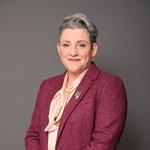Ovarian Cancer: Diagnosis
(asked on 22nd April 2025) - View SourceQuestion to the Department of Health and Social Care:
To ask the Secretary of State for Health and Social Care, what assessment his Department has made of the potential impact of misdiagnosis of women’s health symptoms on levels of diagnosis of ovarian cancer in (a) all women and (b) women under the age of 50.
The Government is committed to improving the diagnosis, treatment, and ongoing care of gynaecological conditions, including ovarian cancer. NHS England has taken urgent action to address gynaecology waiting lists through the Elective Recovery Plan, including support for innovative care models that bring services closer to patients, and the piloting of gynaecology pathways within community diagnostic centres.
As a first step towards improving the diagnosis of ovarian cancer and reducing misdiagnosis, the National Health Service is now delivering an extra 40,000 operations, scans, and appointments each week. The NHS is also improving pathways to get people diagnosed once they are referred, including non-specific symptom pathways for patients who do not fit clearly into a single urgent cancer referral pathway. Combined, these interventions will help ensure early diagnosis and faster treatment, including for women with ovarian cancer, with further actions to be outlined in the forthcoming National Cancer Plan.
The most recent data available from the National Disease Registration Service shows that in England in 2022, 3,151 people were diagnosed with ovarian cancer at stages 3 & 4, which is classed as advanced.

